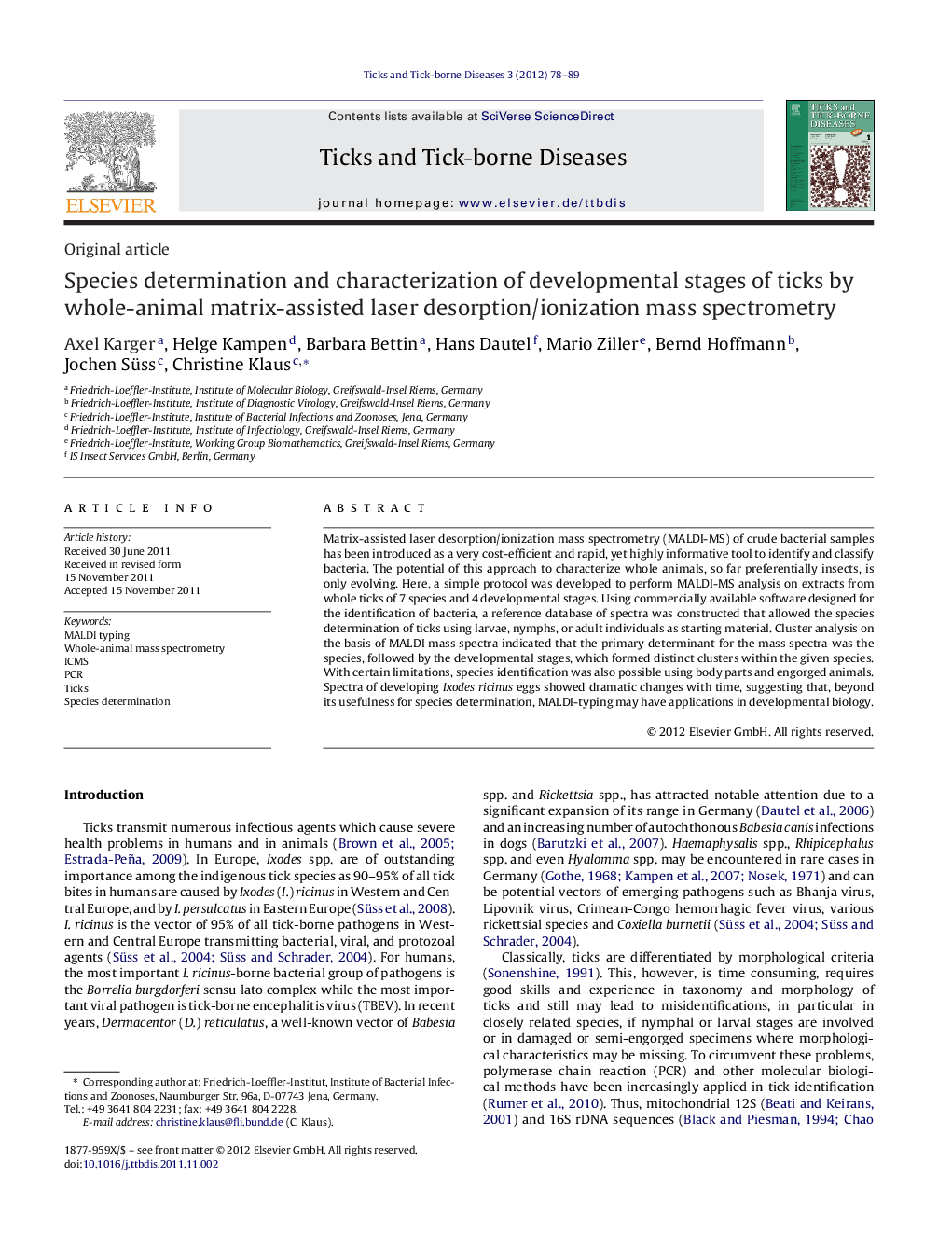| Article ID | Journal | Published Year | Pages | File Type |
|---|---|---|---|---|
| 2474270 | Ticks and Tick-borne Diseases | 2012 | 12 Pages |
Matrix-assisted laser desorption/ionization mass spectrometry (MALDI-MS) of crude bacterial samples has been introduced as a very cost-efficient and rapid, yet highly informative tool to identify and classify bacteria. The potential of this approach to characterize whole animals, so far preferentially insects, is only evolving. Here, a simple protocol was developed to perform MALDI-MS analysis on extracts from whole ticks of 7 species and 4 developmental stages. Using commercially available software designed for the identification of bacteria, a reference database of spectra was constructed that allowed the species determination of ticks using larvae, nymphs, or adult individuals as starting material. Cluster analysis on the basis of MALDI mass spectra indicated that the primary determinant for the mass spectra was the species, followed by the developmental stages, which formed distinct clusters within the given species. With certain limitations, species identification was also possible using body parts and engorged animals. Spectra of developing Ixodes ricinus eggs showed dramatic changes with time, suggesting that, beyond its usefulness for species determination, MALDI-typing may have applications in developmental biology.
